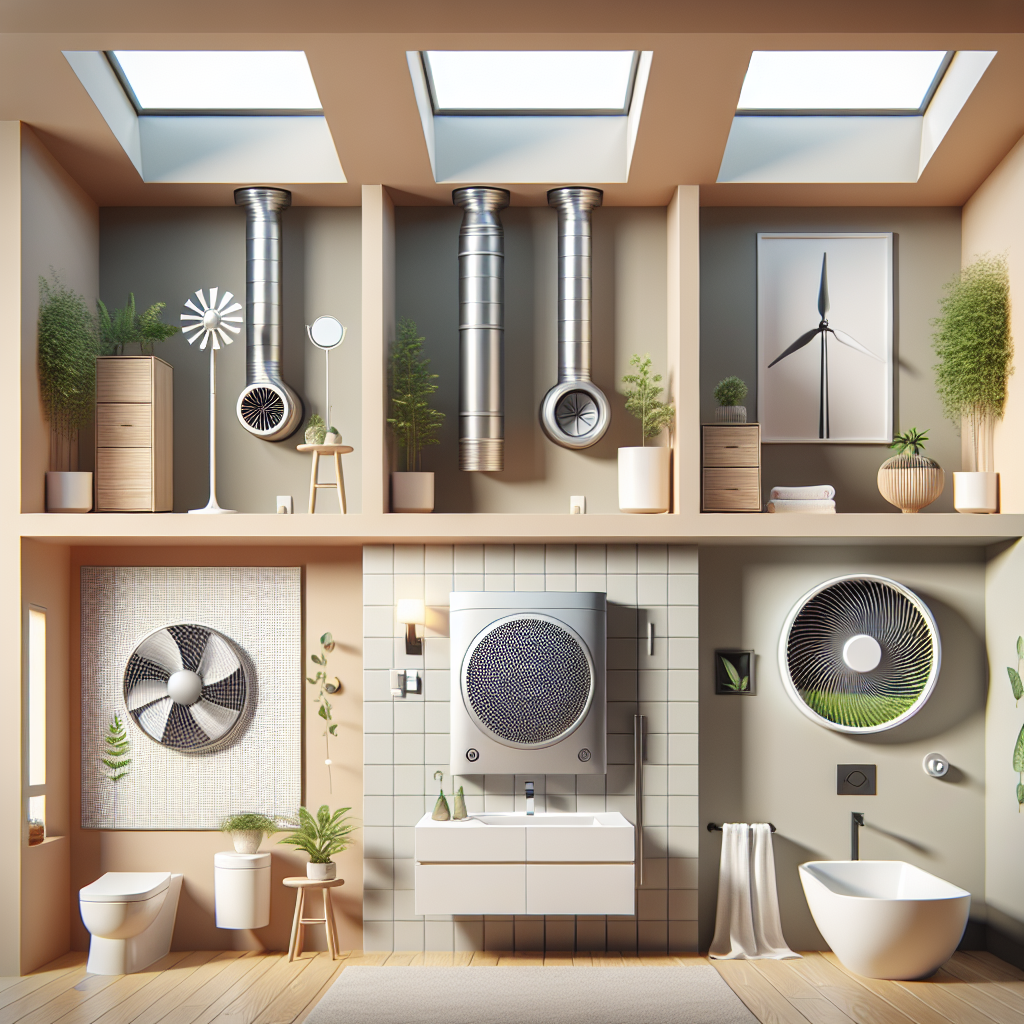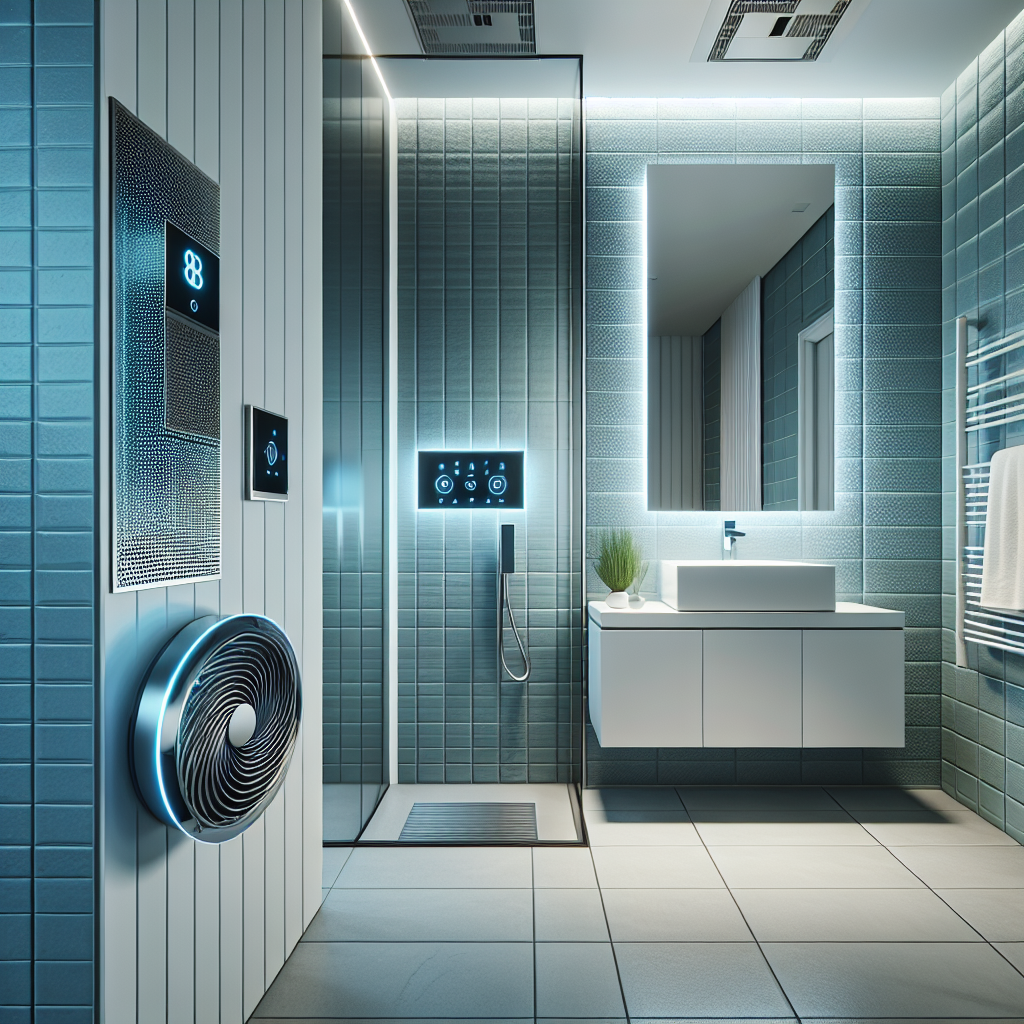Energy-efficient Bathroom Ventilation Systems: Improving Indoor Air Quality and Saving Energy

Proper ventilation is essential for maintaining a healthy and comfortable indoor environment, especially in areas prone to high humidity and moisture, such as bathrooms. Energy-efficient bathroom ventilation systems not only help remove excess moisture and odors but also contribute to energy savings. In this article, we will explore the benefits of energy-efficient bathroom ventilation systems, discuss different types of systems available, and provide valuable insights on how to choose the right system for your needs.
The Importance of Bathroom Ventilation
Before delving into energy-efficient bathroom ventilation systems, it is crucial to understand why proper ventilation is essential in bathrooms. Bathrooms are prone to high levels of humidity due to activities like showering, bathing, and handwashing. Without adequate ventilation, this excess moisture can lead to a range of problems, including:
- Mold and mildew growth
- Peeling paint and wallpaper
- Warped wood and damaged fixtures
- Musty odors
- Poor indoor air quality
Furthermore, excessive moisture in the bathroom can also affect the overall indoor air quality of your home, potentially leading to respiratory issues and allergies. Therefore, investing in a reliable bathroom ventilation system is crucial to maintain a healthy and comfortable living environment.
Types of Energy-efficient Bathroom Ventilation Systems
When it comes to energy-efficient bathroom ventilation systems, there are several options available. Let’s explore some of the most common types:
1. Exhaust Fans
Exhaust fans are the most popular and widely used bathroom ventilation systems. These fans work by drawing out the moist air from the bathroom and expelling it outside. Energy-efficient exhaust fans are designed to consume less energy while effectively removing moisture and odors. Look for fans with a high CFM (cubic feet per minute) rating and an ENERGY STAR certification for optimal energy efficiency.
2. Heat Recovery Ventilators (HRVs)
Heat Recovery Ventilators (HRVs) are advanced ventilation systems that not only remove moisture but also recover heat from the outgoing air. HRVs work by exchanging heat between the outgoing stale air and the incoming fresh air, reducing the energy required to heat or cool the incoming air. These systems are particularly beneficial in colder climates where energy efficiency is crucial.
3. Energy Recovery Ventilators (ERVs)
Similar to HRVs, Energy Recovery Ventilators (ERVs) also recover heat from the outgoing air. However, ERVs go a step further by also transferring moisture between the incoming and outgoing air streams. This helps maintain a balanced humidity level in the home, reducing the need for additional humidification or dehumidification. ERVs are ideal for areas with extreme temperature variations.
Choosing the Right Energy-efficient Bathroom Ventilation System
When selecting an energy-efficient bathroom ventilation system, there are several factors to consider:
1. Size and Capacity
The size and capacity of the ventilation system should be appropriate for the size of your bathroom. Consider the square footage of the room and the recommended air changes per hour (ACH) for effective ventilation. A professional contractor can help determine the right size and capacity for your specific needs.
2. Energy Efficiency
Look for ventilation systems with high energy efficiency ratings, such as ENERGY STAR certification. These systems are designed to consume less energy while providing effective ventilation. Investing in an energy-efficient system can lead to significant energy savings in the long run.
3. Noise Level
Consider the noise level of the ventilation system, especially if you have a bathroom located near bedrooms or living areas. Look for fans with low sone ratings for quieter operation.
4. Additional Features
Some energy-efficient bathroom ventilation systems come with additional features like built-in humidity sensors, timers, and motion sensors. These features can help optimize energy usage and ensure efficient ventilation based on occupancy and humidity levels.
Frequently Asked Questions about Energy-efficient Bathroom Ventilation Systems
1. How often should I run my bathroom ventilation system?
It is recommended to run your bathroom ventilation system during and after every shower or bath to remove excess moisture. Leaving the system on for an additional 10-15 minutes after using the bathroom can help ensure proper ventilation.
2. Can I install a bathroom ventilation system myself?
While it is possible to install a bathroom ventilation system yourself, it is recommended to hire a professional contractor for optimal results. A professional can ensure proper installation, ventilation capacity, and compliance with local building codes.
3. How much energy can I save with an energy-efficient bathroom ventilation system?
The amount of energy savings will vary depending on factors such as the size of your bathroom, the efficiency of the ventilation system, and your usage patterns. However, energy-efficient systems can help reduce energy consumption by up to 50% compared to conventional systems.
4. Are there any maintenance requirements for bathroom ventilation systems?
Regular maintenance is essential to ensure the optimal performance of your bathroom ventilation system. Clean or replace the filters as recommended by the manufacturer, and inspect the system for any blockages or damage. It is also advisable to have the system professionally serviced at least once a year.
5. Can a bathroom ventilation system help reduce odors?
Yes, a properly functioning bathroom ventilation system can help remove odors by expelling the stale air outside and bringing in fresh air. Look for ventilation systems with higher CFM ratings for more effective odor removal.
Summary
Energy-efficient bathroom ventilation systems play a crucial role in maintaining a healthy and comfortable indoor environment. By effectively removing excess moisture and odors, these systems help prevent mold growth, improve indoor air quality, and save energy. When choosing a ventilation system, consider factors such as size, energy efficiency, noise level, and additional features. Regular maintenance is also essential to ensure optimal performance. By investing in an energy-efficient bathroom ventilation system, you can enjoy a healthier home while reducing your energy consumption and utility bills.
For professional installation and advice on energy-efficient bathroom ventilation systems, contact North Bay Contractors.

